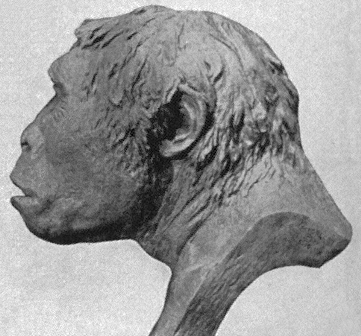- Series:Fossils, Transcript English
Psalm 92:5-6
“O LORD, how great are thy works! [and] thy thoughts are very deep. A brutish man knoweth not; neither doth a fool understand this.”
Creation Scientists have often complained that evolutionists seem unscientifically eager to turn any ancient fossil into proof of human evolution. In the past, bones from pigs, monkeys, alligators, horses and even an elephant have been “reconstructed” into missing links between humans and ape-like creatures.
 While these examples are all old, evolutionists continue to be over-enthusiastic about using animal bones to make human-like creatures. A more recent example caused the respected magazine, Science News, to note that even some evolutionists have begun to discuss “anthropologists’ over-zealous pursuit of human ancestry.”
While these examples are all old, evolutionists continue to be over-enthusiastic about using animal bones to make human-like creatures. A more recent example caused the respected magazine, Science News, to note that even some evolutionists have begun to discuss “anthropologists’ over-zealous pursuit of human ancestry.”
In 1979, a bone discovered in northern Africa was described as a hominoid clavicle. In plain English, the bone was said to be the collarbone of a creature that was an ape becoming man. Its discoverer said that the bone indicated that its owner had possibly even walked upright, like modern humans. As in most of these claims, its discoverer said that it was the oldest evidence yet for the evolution of modern man. Others studied the fossil bone over the next few years. They came to the conclusion that it was, in fact, the rib bone from a Pacific white-sided dolphin. One scientist jokingly nicknamed the creature “flipperpithicus” – meaning the dolphin ape.
We need to take care that we don’t become over-impressed by the conclusions of scientists with lots of letters behind their names. When it comes to supporting evolution, many scientists are driven more by their desire to prove evolution than by any facts.
Prayer:
Father in heaven, strengthen my faith so that I know what I believe and why I believe, so that I may not be intimidated by the claims unbelievers make against the truth of Your Word. In Jesus’ Name. Amen.
Notes:
W. Herbert. “Hominids Bear Up, Become Porpoiseful.” Science News, Vol. 123, p. 246. Photo: An imaginative reconstruction of Java Man, considering that it’s based on only a skullcap, femur and a few teeth.
